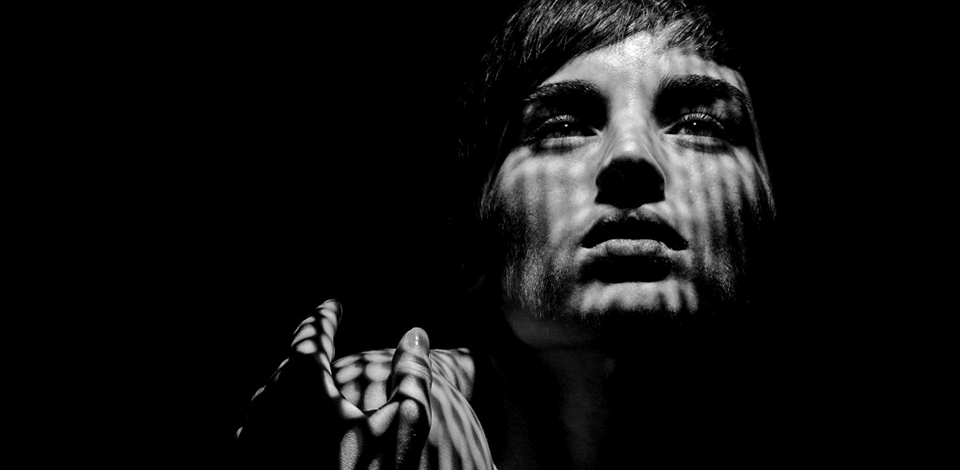
A gobo is an object located between the light source and the subject used for projecting a shadow drawing or pattern. Gobo style is typically used to set a specific mood, add drama, or tell a story.
Do you want to learn how to take beautiful gobo photos by using special filters and commonplace objects? Doing gobo photography isn’t easy since you need to select a proper light source and shadow-casting object.
If you want to become a gobo photography expert, study the tips provided below. With their help, you’ll learn how to take stylish gobo photos and always achieve amazing results.
Gobo is used for different types of photography, but it looks best in black and white photography. Here are the most important tips and recommendations you have to follow if you want to receive beautiful B&W gobo pictures or add shadows and light shapes to your color images.

Gobo acts as a stencil that creates shapes using light. Photographers often use gobo to add shadows and depth to images that would otherwise have boring lighting.
Some use it to add volume to black-and-white photos, while others like to project patterns to implement abstract ideas, for instance, by using dots, stars, lines, etc. To do so, they require special templates that are placed between the light source and the subject of the photo.

Get a Gobo set that comes with various drawings and pick one of the available filters for landscape photography to create a memorable image.
There are 3 gobo types: shine-through gobo, placed intervening objects, and located in-place intervening objects. The first type is typically represented by small panels that are placed at the edge of a cardboard tube in a special Gobo projector, small cardboard/foam boards that have a cutout pattern, and laser-cut etched glass and metal gobos. Gobos with laser-etched metal and glass patterns are designed for professional projectors while the rest you can do yourself.
To reduce the time you spend enhancing your gobo pictures, reach out to professionals for help. They'll adjust the shadows, tones, white balance, and other color parameters, merge your photos and fix their sharpness and contrast.
Gobo templates can be quite expensive. Thankfully, you can always create gobo objects yourself. The most commonly used method is to cut shapes out of foam board.
To do so, you’re going to need a black foam board. It’s best to use black-colored foam since white objects reflect backlighting and can easily create distracting spots. Draw the desired shape with a pencil, then take a knife and carefully cut out the gobo.

You can cut out a large shape aperture to preserve a wide border and prevent light from leaking onto the scene around the gobo’s edges. You need to be able to use flash without any protective casings since a large panel has to prevent the light from falling in the object’s direction.

A gobo can be a separate natural object that is simply placed between the light source and the subject. Plants and tree branches have a naturally complex shadow pattern that consists of an infinite number of crisscrossing stems, leaves, and branches.
Since you’re putting a live gobo in a controlled environment, you can relocate the shadows by moving around the stems and leaves to cast the perfect shape onto the subject or background. You can reach this goal particularly easily by using fern type plants. You can also combine multiple plants and branches and place them in front of the light source to receive a multilayered shadow grid.

If you want to add a subtle and beautiful shadow pattern, consider draping a thin lace or a net in front of the light source. Depending on the opacity of the lace fabric, the shadows on the subject will be either very vivid or soft. It’s important to properly focus on the shadows if you want to see all the tiniest details.

When going on a walk outdoors, you can stumble upon everyday living photography gobo subjects that cast fantastic shadows onto other objects. You can take a photo under a tree, near bushes or plants. You can also find gobo shadows cast by artificial structures like fences.
Industrial ruins are a terrific resource for creating unique shadows. Inside a destroyed building, you can find a damaged roof that lets sun rays fall onto a dark puddle of shadows. In this case, the roof serves as a gobo.
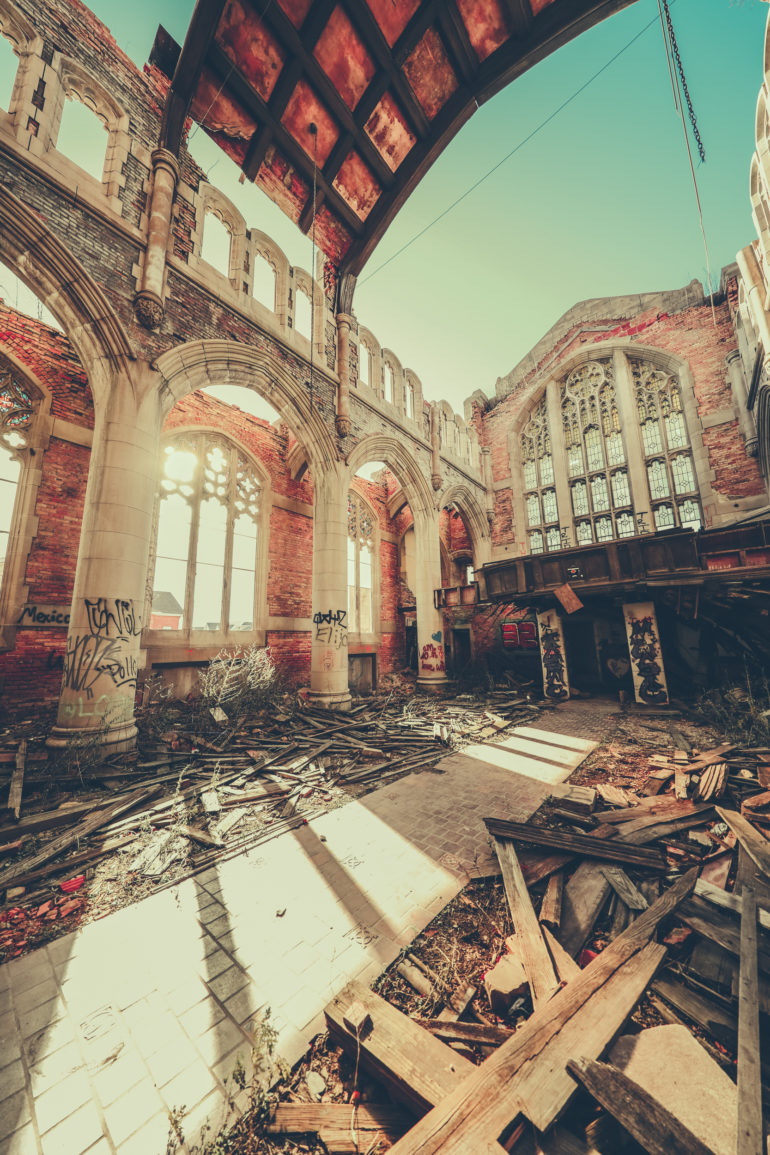
The windows of industrial warehouses can create terrific shadows for portrait photography, especially if they still have a glazing frame. You can find incredibly interesting partial shadows caused by uneven edges if the window has broken glass sections.

There are two types of lighting you can use for gobo photography: natural light and artificial light. Each has its own properties and control levels. Both can create shadows with either rough or soft edges and both can be used for storytelling, making a photo more dramatic or boosting contrast.

Sunlight is free but it’s hard to work with: you need to accommodate your schedule to catch a sunny day while constantly keeping tabs on the weather and clouds. You can control artificial lighting more efficiently and choose between two types: constant and impulse. The downside is you’ll have to purchase or rent special equipment, or use DIY photography lighting, which also requires proper installation.
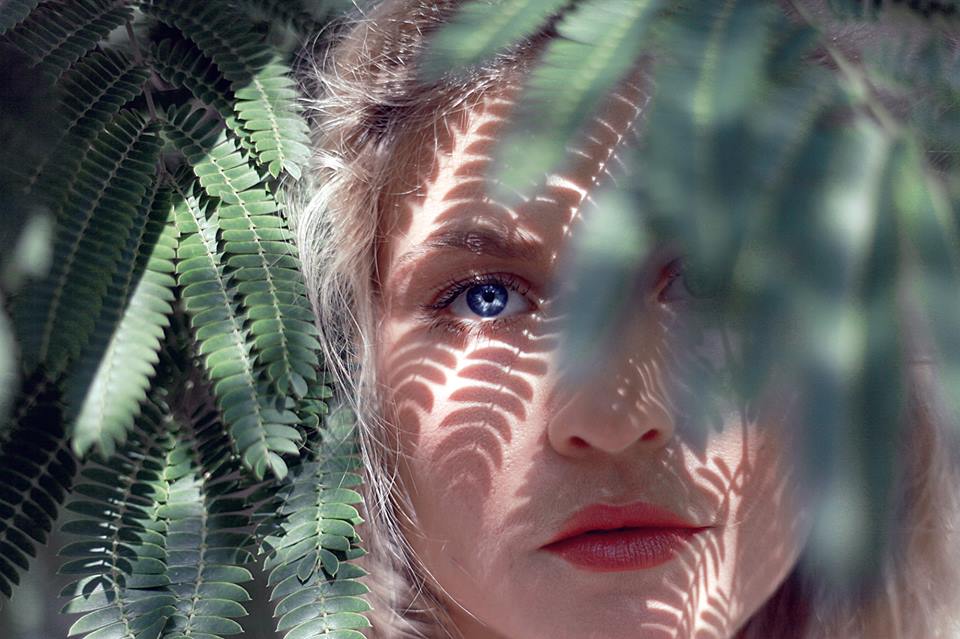
Sunlight can be used both indoors and outside. If you’re taking photos in a room, then the building’s wall and window frame act as a gobo.
When working outdoors, the sun’s power can be used to turn nearly anything into a gobo to add shadows and make your sun photography more interesting. The patchy sunlight that shines through the forest crowns, an interesting texture cast by a wire fence, the harsh industrial shadows created by vehicles or structures – are all fantastic subjects.
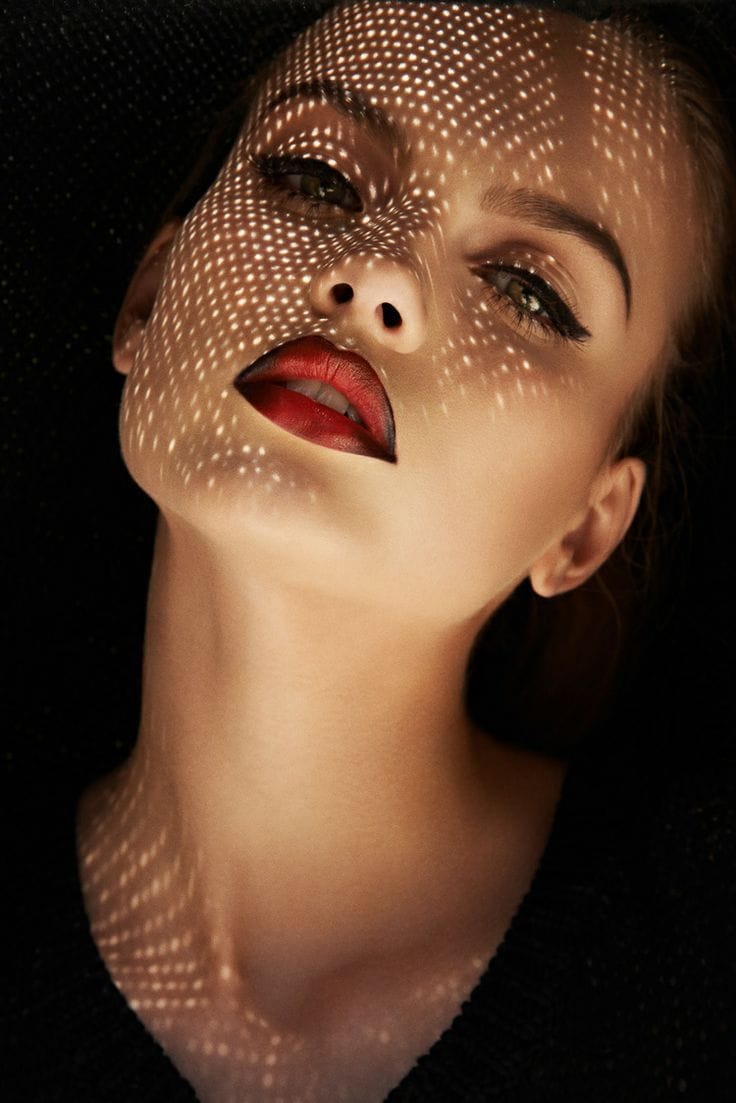
If the light source is far away, then the sun rays will fall parallel to the object, meaning the received shadows will look harsh and sharp. If the sky is cloudy, then the shadow’s edges will be blurrier and softer.

Permanent light sources allow you to see where and how gobos cast their shadows. This makes it easier to arrange the scene, as you can see and relocate shadows before you have to release the shutter button.
That said, a permanent light is far less powerful than a flash or a stroboscope. The usage of LED lights for photography for lighting the gobo can require you to decrease the exposure time or increase ISO to achieve the correct exposure.
Try using special equipment like a studio stroboscope. For instance, you can consider getting the Godox DP400III, which is a professional strobe lighting set that comes with a special Bowens mount designed for attaching flash units.
Some flash products and stroboscopes have a pilot light, which is a constant light source that is turned on until the flash goes off while also offering higher intensity than LED lights. While flash offers a more powerful light source, it has to be limited since otherwise, it will reflect light everywhere while damaging the high contrast you may want to create.

You can limit the power of a flash by using a large gobo panel to prevent scattered light rays from shedding onto the scene. Use a black or dark gobo to minimize reflections. Finally, increase the flash's zoom to narrow the ray and place a tube next to it to direct and control the light.
Professional Gobo projectors are highly reliable and can create super-clear, easily controllable, and precisely-positioned shadows. You can use them for adding interesting elements to the background or subject of your photos.
To use a gobo in a handmade projector, place one of the best camera flashes into the Godox V1S Speedlite tube.
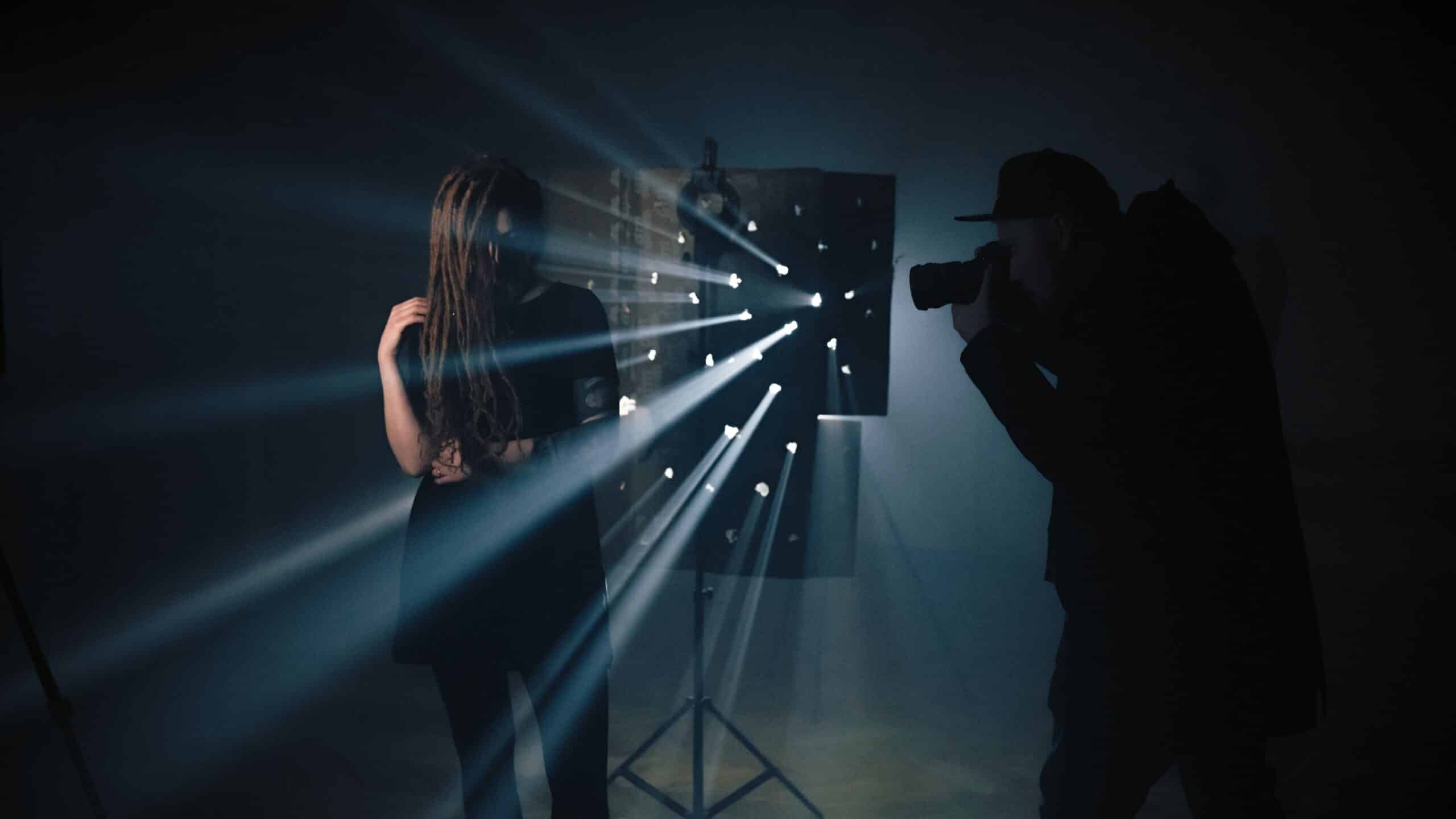
Attach the gobo to the gate, set your wide angle lens to the widest setting, completely rotate out the focus ring, aim the gobo at the background from about four feet, turn on the key light, adjust the flash parameters and take a test photo.

Gobo can help you create monochrome vs grayscale photography in a low-key manner. One of the most useful low key photography tips is to use as little light as possible to receive a dark, mysterious image.
In that case, the focus is entirely on the subject while the shadows remain hidden in the darker image areas. By using a proper gobo design, you can set up a low-key atmosphere that conveys a sense of mystery, tension, and isolation.

In contrast to low-key images, high-key photographs are easily noticeable because of their bright, highlighted parts and a small number of details.
For this genre, a gobo can be employed to add suggestive and subtle shadow textures to specific areas. A fine mesh or lace draping placed between the light and the subject allows you to do exactly that.

Textured or broken glass is also a nice tool for introducing a layer of subtle shadows to the shot. The textured glass pattern can produce different shadow intensity levels that make the image more interesting and intriguing.
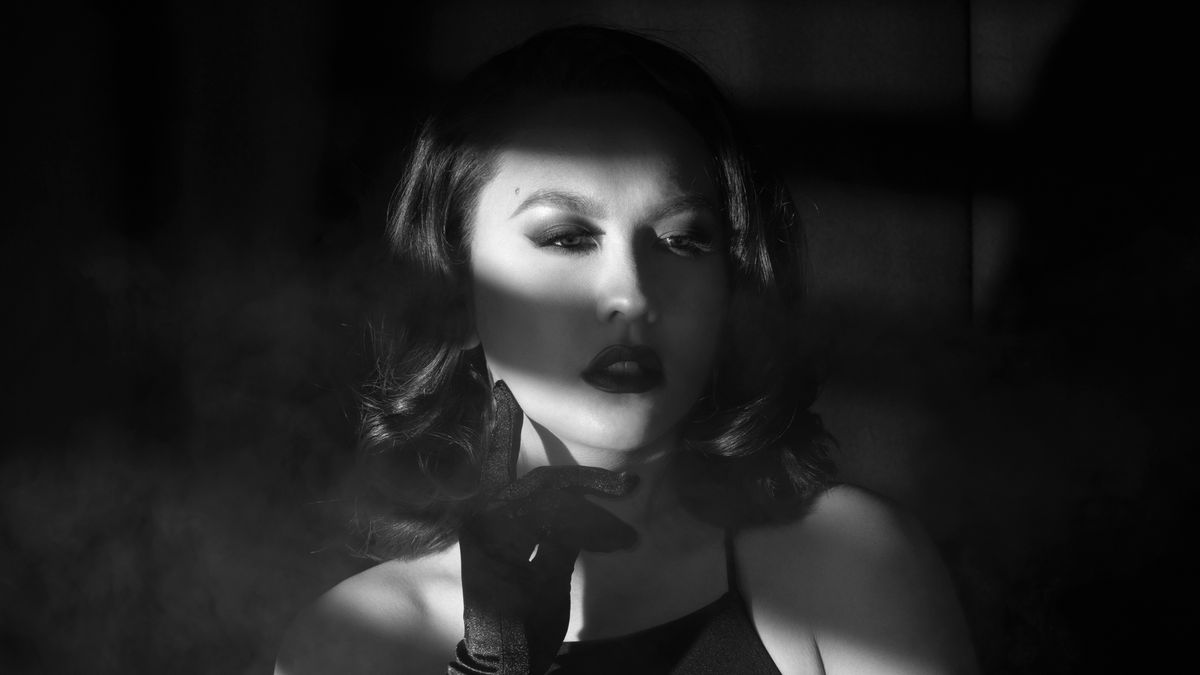
A traditional Noir obstacle, a window with blinds, can be effortlessly recreated with a gobo, as all you need are cardboard cutouts of slots. As a result, you’ll receive a series of shadow bars cast onto the subject.
The light areas can be adjusted to emphasize the eyes or lips to increase the sense of tension and mystery. A gobo can also be used for projecting distorted windows onto a background or subject.

You can imitate the dim, forsaken atmosphere of an industrial area by using an appropriate gobo. Shadows created by chains, machine components, fences, and various factory equipment can do wonders for conveying the feeling of an abandoned industrial site.
If you want to breathe more life into your industrial scene, consider adding a smoke plume that will be highlighted by the gobo's light shafts and pop up against the dark shadows cast by the gobo.

The usage of shadows and controlled light can add a sense of tension to the photo. Isolated facial or body parts can convey the idea of secrecy, concealment, or surveillance, which is the perfect way to create tension. Use macro lenses to capture small details and highlight shadowed features.

Gobo photography can help you convey an idea by adding story elements to the scene. Gobos can have any shape you need to emphasize the main point of your story: a gothic window that mimics a church or a castle, a palm cluster that evokes thoughts of a tropical beach at sunset, a single gnarled tree that lets you know a place is constantly windy.
Vertical stripes created by shadows can refer to the interior of a jail cell, while horizontal stripes can make you think about an office environment.
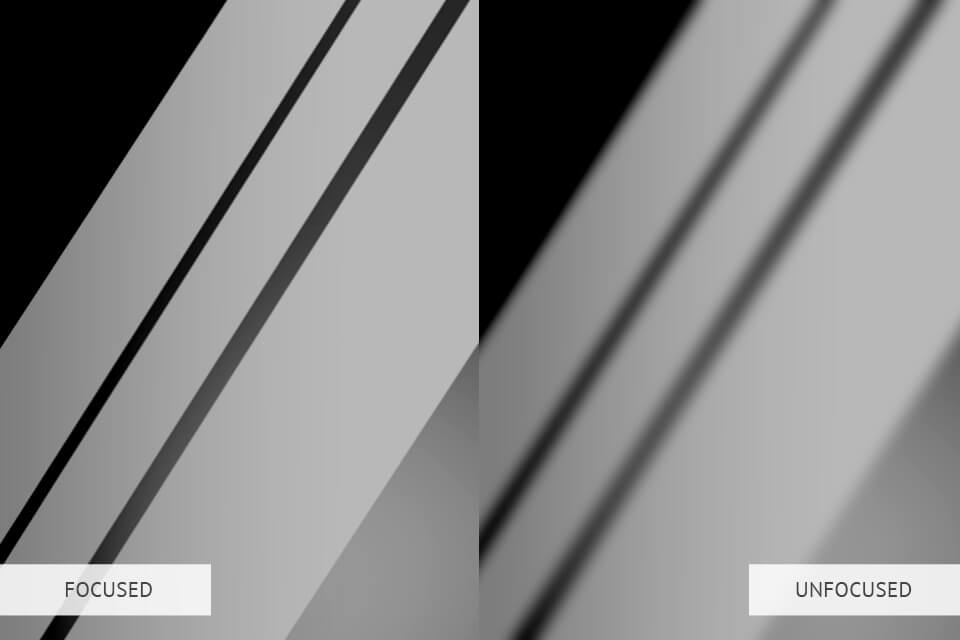
The level of contrast and edge sharpness can be increased by using a powerful light source that is entirely focused on the subject or backdrop. The contrast can be made incredibly sharp by using opaque material for making a cutout gobo. If the gobo’s material is somewhat translucent, you can use it for creating visual transitions from darker shadows to brighter areas.
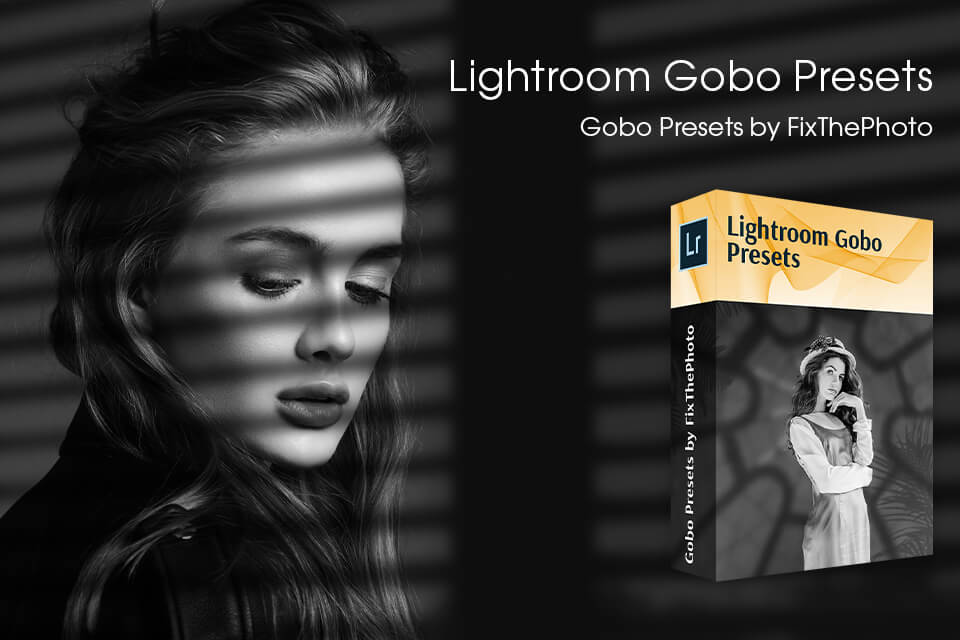
If you want to receive professional gobo pictures, then you should make use of this preset collection. Here, you’ll find an array of cool tools for enhancing the colors and contrast of your photos to make them more dramatic. They’re suitable for all types of images regardless of their genre.